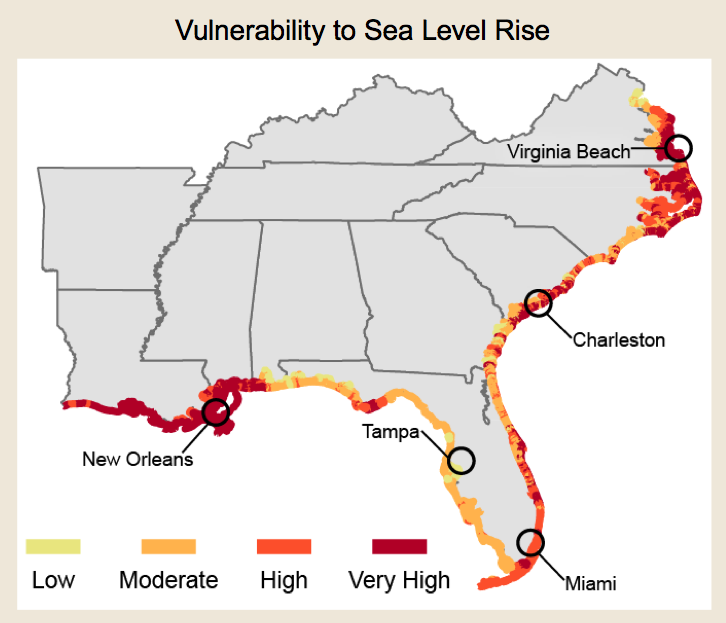White House: Southeast 'exceptionally vulnerable' to climate change

The White House has released the most comprehensive scientific assessment to date of climate change and its regional impacts, and it reports that the Southeast is "exceptionally vulnerable to sea level rise, extreme heat events, hurricanes, and decreased water availability."
Unveiled today, the third U.S. National Climate Assessment was developed over the past four years with the help of hundreds of top U.S. climate scientists and technical experts, with input from the public and nongovernmental organizations. The White House called the assessment's release a "key deliverable" of the Climate Action Plan released by President Obama last June.
"The contents confirm that climate change is not a distant threat," says John Holdren, President Obama's science adviser. "It is affecting the American people already."
The assessment's key concerns for the Southeast:
1. Sea level rise. The assessment expects sea level to rise between 8 inches and 6.6 feet by 2100, with the most certainty between 1 and 4 feet. The cities most at risk from rising seas include New Orleans (where about half the population lives below sea level); Miami; Tampa; Charleston, SC; and Virginia Beach, VA. Meanwhile, coastal counties and parishes in Alabama, Mississippi, Louisiana and Texas already face average annual losses of $14 billion from a combination of hurricane winds, land subsidence, and sea level rise -- a figure that could reach $18 billion to $23 billion by 2030.
2. Increasing temperatures. While the Southeast has cycled between warm and cool periods, temperatures in the region have been on the rise since 1970 and are expected to continue to climb this century. The assessment notes that Atlanta, Miami, New Orleans and Tampa have already had increases in the number of days with temperatures above 95 degrees F., during which the number of deaths is above average. In addition, heat stress hurts dairy and livestock production and crop productivity, while higher temperatures are contributing to the region's growing number of wildfires.
3. Decreased water availability. Though the change in projected precipitation for the Southeast remains uncertain, the assessment says it's reasonable to expect increased evaporative losses due to rising temperatures. At the same time, the region's growing population is putting greater demands on water supplies while aquifers are at greater risk of saltwater intrusion from rising seas. The assessment expects the net water supply availability in the Southeast to decline over the next several decades, especially in the western part of the region.
Besides considering climate impacts by region, the assessment also looks at impacts on sectors of the economy including energy, agriculture and forests. And it considers various responses to climate change such as lowering emissions of heat-trapping gases and planning to adapt to new conditions.
"Global climate is projected to continue to change over this century and beyond," the report concludes, "but there is still time to act to limit the amount of change and the extent of damaging impacts."
Tags
Sue Sturgis
Sue is the former editorial director of Facing South and the Institute for Southern Studies.
